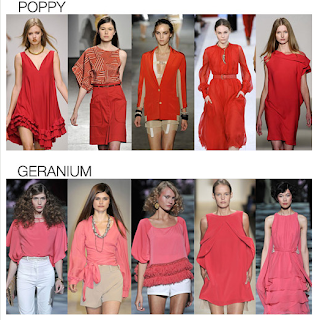I am back to the bias stays/facing theme as I used bias stays and bias facings on my flapper dress.
{edit} If you are new to this - thanks, Oona, for reminding - stays are used to stabilize seamlines or garment edges to prevent stretching, not to be confused with the waist stay.
It is probably one of the more fascinating subjects for me since stays belong to those invisible but crucial techniques in couture sewing. And once you dig into this topic you will uncover quite a few options. Who knows what to use? and why?... After taking several classes with Susan Khalje, making quite a few couture garments myself, and researching a range of available resources I began to understand the choices; and so, today, I want to share my findings with you.
I don't use fusible stays, so I won't cover those. But I hope this brief overview of sew-in stays will help you save your time when looking for the most appropriate stabilizing choice.
TWILL TAPE
Availablility: Black or white, polyester (less bulky) or cotton.
Width:
1/4" is preferred for stabilizingCharacteristics: straight grain, stabilized seams will never stretch, will behave equally well after washing
Fabric suitability: heavy- to mediumweight woven fabrics
Fit: close fit, tailored styles
Support: only on straight edges or seams, such as waistline, or top edge of the strapless bodice, etc.
FABRIC SELVAGE & STRAIGHT-GRAIN STAYS
Availablility: fashion
fabric selvage, can be made of china silk, silk organza, silk chiffon or cotton voile. Chose the stay to match the weight, the color and draping characteristics of your fabric. Stays cut on
lengthwise grain can also be used, as well as
crossgrain stays, but they are not as sturdy as the selvage, and, in addition, the crossgrain-cut stay will have some stretch. If you do use stays cut on lengthwise or crossgrain, do press them and stretch while pressing to remove all the stretch. I explain the reasons below, under
bias-cut stays.
Width:
1/4" is preferred for stabilizingCharacteristics: firm support, perfect match in color and weight because it is cut from the same fabric, minimum bulk
Fabric suitability: sheer or delicate woven fabrics, medium-weight fabrics, bouclé.
Fit: any styles
Support: straight edges or seams, such as waistline, or top edge of the strapless bodice, etc.
ELASTIC STAY
Availability: purchase braided elastic (gets narrow when stretched)
Width: approximately 1/4"(0.5 cm)
Characteristics: flexible support, allows to move, but returns to shape; bulky, so cannot be used on light-weight fabrics.
Fabric and Style Suitability: medium-weight fabrics, especially on dresses and tops with plunging necklines; also used for armholes.
Fit: close fit
Support: deep necklines, armholes, and similar applications. Here I want to add that on those deep necklines you can always consider using boning to keep the neckline close to your body. Elastic can keep the neckline taut, while boning will prevent the garment from revealing too much when you move. More on it later.Application: it is applied using the catchstitch, which encases the elastic on both sides without piercing it - elastic should be able to move. The elastic is then pulled up to the desired length and securily sewn to the garment at the end.
SEAMS GREAT
Availablility: 100 % percent nylon; in black, white or ivory; bias or straight grain.
Width:
available in 5/8"Characteristics: light support, sheer and lightweight, minimum bulk,
Fabric suitability: sheer or delicate woven fabrics
Support: straight or slightly curved seams, prevents seam slippage.
Notes: Susan Khalje also recommends using bias-cut tricot to stabilize scalloped seams on knit fabrics.
BIAS-CUT STAY
 |
on the top, the strip after pressing, stretching and steaming out the bias;
below, initial width. |
Availablility: DIY, I use a matching silk organza to make this bias stays because organza and sturdy and sheer at the same time. Bias stays need to be cut on true bias and then stretched and presses until all the stretch disappears. (Read my
earlier post on bias stays)
Width:
1/4" - 3/8" Characteristics: light support, perfect match in color and weight because it can be cut from matching silk organza, minimum bulk, minimal fraying.
The width of the strip reduces to almost a third of the original after pressing, the length increases, and the strip does tend to return to original shape if moved. It's simple mechanics, and so that's why you remove all bias with pressing - the strip can only get slightly shorter during the wear - making the stay perfect for necklines and armholes. In this, this stay works similarly as the elastic stay mentioned above. Finally, because of the bias the stay creates a softer edge (or roll) where it is applied, which I personally like more. Straight-grain stays, or folds produce a crisper edge when pressed. Fabric suitability: sheer or delicate woven fabrics, knits, lace.
Fit: any styles
Support: shaped seams on wovens, straight and shaped seams on knits, seams on bias-cut garments, especially zippers, etc.
MY FAVORITES
I tend to use organza selvage for straight/ on-grain edges and shoulder seams. If seams are cut on the bias (V-neck, for example), especially on the lightweight fabrics, I prefer using bias stays, also from silk organza.
TUTORIALS & RESOURCES
At this point I cannot link to tutorials on how to apply this different type of stays - I am working on the bias stay tutorial - but you can find some information in the following resources.
Readers, do you use different stays in your sewing? What were your biggest stay frustration moments? Are you interested in a tutorial on how to apply any of those stays?
















































